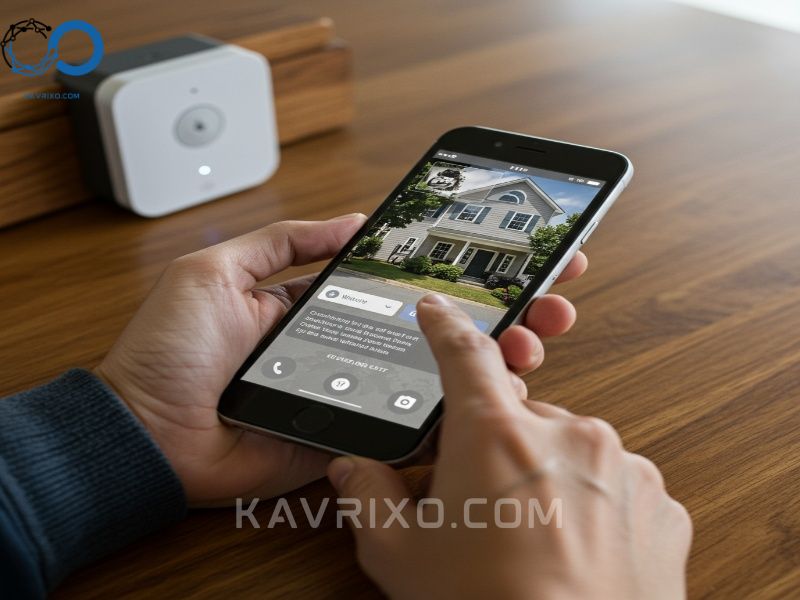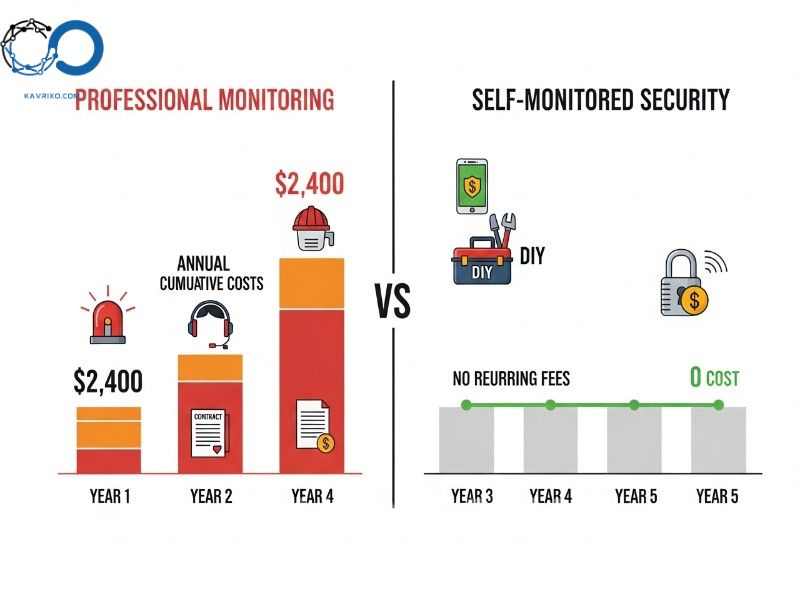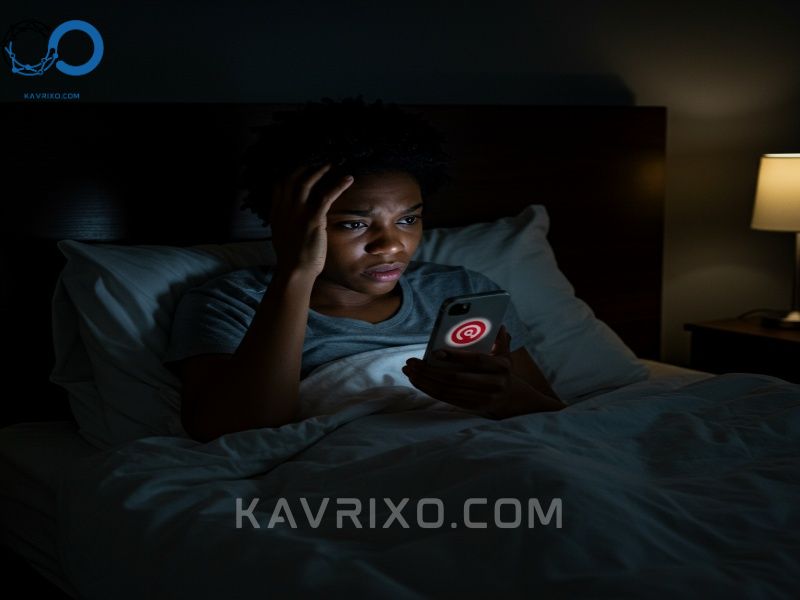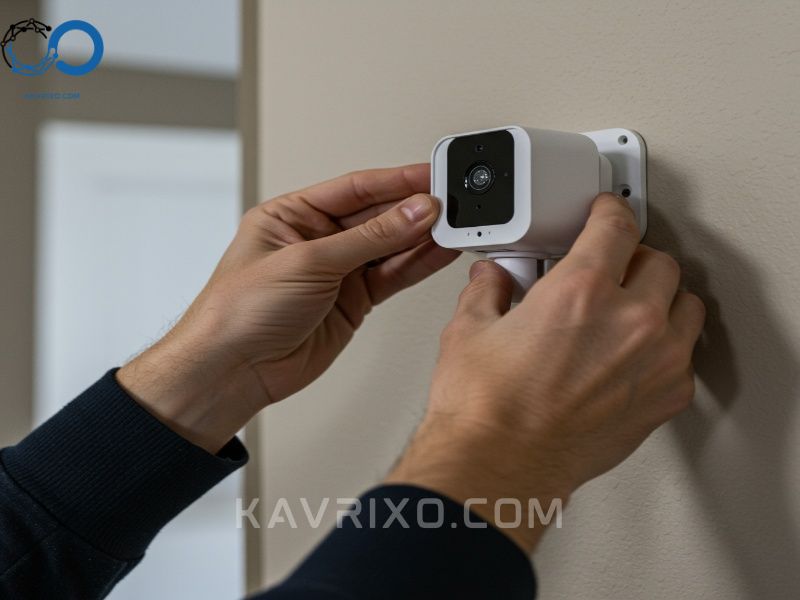For decades, home security operated on a simple, expensive premise: you bought the equipment, and then you paid a company perpetually to watch it. If an alarm went off, that company handled the verification and dispatch process. This model provided peace of mind, but at the cost of monthly fees, long contracts, and often, a surprising lack of control.
Today, however, the landscape has fundamentally shifted. Thanks to advancements in smart home technology, robust internet connectivity, and high-quality yet affordable cameras, millions of homeowners are opting for a different path: self monitored home security.
This comprehensive guide delves into why these modern, autonomous systems are rapidly becoming the preferred choice for informed consumers. We will explore the benefits, the essential components, the trade-offs involved in choosing an unmonitored alarm system, and provide the detailed knowledge you need to take absolute command of your home’s protection.
Contents
- 1 Understanding Self-Monitored Home Security
- 2 The Compelling Advantages of Self Monitored Home Security
- 3 Essential Elements of Unmonitored Home Security Systems
- 4 Addressing Concerns: The Trade-offs of Choosing an Unmonitored Alarm System
- 5 Choosing and Installing Your Ideal Self-Monitored System
- 6 Maximizing the Effectiveness of Your Self Monitoring Setup
- 7 Reclaiming Your Home’s Security Future
Understanding Self-Monitored Home Security
The term “self monitored home security” describes systems where the homeowner—not a third-party central station—is the primary responder to alerts and alarms. When a sensor is tripped or motion is detected, the notification goes directly to your smartphone, tablet, or other connected device. It is up to you to assess the situation and decide whether to contact emergency services, a neighbor, or simply disarm the system.
This model provides a level of autonomy that traditional systems simply cannot match, putting the power of immediate decision-making squarely in your hands.
Defining Self-Monitoring vs. Professional Monitoring
To truly appreciate the value of self-monitoring, it helps to understand its key distinction from the traditional model:
| Feature | Self Monitored Home Security | Professionally Monitored Systems |
| Response Center | Homeowner/Mobile Device | Third-party Central Station |
| Alert Notification | Immediate push notification/email | Central station receives alert, calls homeowner, then calls police (if verification fails) |
| Monthly Cost | Usually $0 (or low cost for cloud storage) | $20 – $60+ per month |
| Contract | None required | Often mandatory 1-3 year contracts |
| Emergency Dispatch | Homeowner calls 911 directly | Monitoring company calls 911 |
| Verification | Visual verification by homeowner (via app/camera feed) | Required by monitoring company before dispatching services |
In essence, when you choose self monitored home security, you are subscribing to technology, not a service contract. You purchase the system outright and own the entire process of response.
Why the Shift to DIY Security?
The rapid adoption of unmonitored home security systems is driven by several converging factors: technological advancement, economic prudence, and a desire for greater personal control.
Ten years ago, a reliable DIY system might have been technologically complex and prone to false alarms. Today, systems are intuitive, highly reliable, and benefit from advanced features like AI-powered person detection, facial recognition, and instant video verification. Furthermore, high-speed, stable Wi-Fi makes the seamless operation of these systems possible without requiring specialized, proprietary wiring.
Economically, the appeal is undeniable. While the upfront cost for a quality unmonitored alarm system might be slightly higher than entry-level professionally monitored systems (which often subsidize equipment with high long-term fees), the long-term savings are massive. Over five years, the elimination of monthly fees can save thousands of dollars—funds that can instead be reinvested into better hardware or additional sensors.

The Compelling Advantages of Self Monitored Home Security
Choosing to manage your own home security offers tangible, powerful advantages that go beyond simply saving money. It transforms your relationship with security from a passive recipient of a service into an active, informed decision-maker.
Eliminating Monthly Monitoring Fees
This is perhaps the most immediate and attractive benefit for the majority of homeowners. Traditional monitoring fees accumulate quickly. Even a modest $30 per month fee totals $360 annually and $1,800 over five years—money that vanishes regardless of whether your system is ever triggered.
With a dedicated self monitored home security setup, the ongoing operational cost is negligible, typically limited only to internet service and the occasional replacement battery. Some systems offer optional, low-cost subscriptions for enhanced cloud video storage, but the core functionality—the alerting, sensing, and recording—remains free from mandatory monthly monitoring contracts.
This financial freedom allows consumers to choose systems based on features and quality, rather than being locked into proprietary hardware dictated by a subscription service. The total cost of ownership (TCO) for robust unmonitored home security systems is significantly lower over the life of the equipment.
Immediate Alerts and Total Control
In a professional monitoring scenario, there is a built-in delay. The alarm trips, the central station receives the signal, an operator attempts to call the homeowner (or designated contact) to verify the alarm, and then they dispatch emergency services. This process can easily take five to ten minutes, a critical delay during an actual emergency.
In a self-monitoring setup, the moment a sensor is tripped or motion is detected, you receive an instantaneous push notification on your phone. You can immediately open the app, view the live video feed (if equipped), and verify the threat in real-time.
This level of immediate control allows for faster decision-making:
1. Instant Verification: You can discern a false alarm (e.g., a pet, a delivery person) from a genuine breach instantly, preventing unnecessary police dispatch.
2. Rapid Response: If a threat is confirmed, you can call 911 directly, providing real-time information to the dispatcher (e.g., “The intruder is wearing a blue shirt and entered through the back window”). This information is invaluable for law enforcement and dramatically speeds up their response time, often bypassing the verification delays inherent in professional services.
Privacy and Data Ownership
The issue of data privacy has become paramount. Many traditional security companies claim ownership of the video footage captured by their devices or store it on their servers, which can be vulnerable to breaches or subject to legal subpoenas without your direct knowledge.
When utilizing unmonitored alarm system hardware, especially those that offer local storage (SD cards, dedicated home network video recorders/NVRs), you retain complete sovereignty over your data. Your video streams are encrypted and stored locally, or, if utilizing cloud storage, you know exactly which provider has access and what their privacy policies entail.
For many users, knowing that the sensitive footage of their home and family is not constantly being accessed or processed by a third-party call center staff provides a deep layer of comfort and security.

Essential Elements of Unmonitored Home Security Systems
A robust, reliable self monitored setup is built upon several interconnected components that communicate seamlessly via a central hub, usually managed through a dedicated mobile application. Understanding these elements is crucial for designing a system tailored to your specific needs.
Cameras and Video Doorbells (The Visual Backbone)
Cameras are the most defining feature of modern self monitored home security. They provide the visual verification necessary to transform an abstract alarm alert into actionable intelligence.
- Indoor Cameras: Used for monitoring pets, children, or specific entry points inside the home. Modern indoor cameras often feature two-way audio, privacy shutters, and motion tracking.
- Outdoor Cameras: Must be weather-resistant and offer high-definition resolution (1080p minimum, 4K preferred). Critical features include night vision (infrared or color night vision), wide-angle lenses, and robust motion detection algorithms that distinguish between people, animals, and vehicles.
- Video Doorbells: Arguably the most important single component of an unmonitored home security system. They monitor the primary ingress point, provide immediate alerts for package delivery or visitors, and allow two-way communication, acting as a crucial deterrent before a breach even occurs.
The integration of these cameras must be flawless, allowing you to instantly pull up any feed the moment an alert is triggered, whether you are across the street or across the globe.
Sensors and Detectors (Entry Points and Environmental Hazards)
While cameras provide the “why” and “where,” sensors provide the foundational “what.” They are the tripwires that initiate the alarm sequence.
- Contact Sensors: Placed on doors and windows, these sensors trigger when the magnetic connection is broken (i.e., when the door/window is opened). They are essential for securing perimeter access points.
- Motion Detectors: Used strategically in larger rooms or hallways. Modern passive infrared (PIR) detectors are often pet-friendly, meaning they can be calibrated to ignore movement below a certain weight or size, significantly reducing false alarms.
- Glass Break Sensors: These specialized sensors listen for the unique frequency of shattering glass, providing protection for large, fixed windows that cannot accommodate contact sensors.
- Environmental Sensors: A comprehensive self monitored home security system should extend beyond intrusion protection. Water leak detectors (for basements or near appliances) and integrated smoke/carbon monoxide detectors ensure safety from non-criminal hazards, triggering the same instant alerts as an intrusion alarm.
The Central Hub and App Integration
The hub is the brain of the unmonitored alarm system. It manages communication between all sensors and the internet router, ensuring reliability. If your Wi-Fi network fails, many hubs have built-in battery backups and, optionally, cellular backup capabilities to ensure the system remains armed and capable of sounding a local siren.
The mobile application is the user interface. A successful self-monitoring experience hinges entirely on the quality of this app. It must be:
1. Intuitive: Easy to arm, disarm, and customize settings.
2. Fast: Alerts must be delivered instantly, and video feeds must load quickly.
3. Feature-Rich: Offering features like scheduling, user management, and detailed event logs.

Addressing Concerns: The Trade-offs of Choosing an Unmonitored Alarm System
While the benefits of control and cost savings are immense, it would be misleading to suggest that self monitoring is without its drawbacks. When you choose an unmonitored alarm system, you are accepting full responsibility for system maintenance and emergency response.
The Responsibility of Self-Dispatch (The Biggest Caveat)
The primary trade-off is the responsibility of being the first responder. If an alarm triggers at 3:00 AM while you are sleeping, or if you are traveling overseas, you must have a reliable, pre-established protocol in place.
With professional monitoring, if you fail to answer the verification call, the company still contacts the police. With self monitored home security, if you miss the alert, the situation goes unaddressed unless the local siren is loud enough to alert neighbors who might intervene.
This necessitates careful planning:
* Response Team: Establishing trusted neighbors or family members who are willing to respond to your alerts when you cannot.
* Travel Planning: Ensuring your system is accessible and functional while traveling, understanding time zone differences, and having local contacts ready to act.
* Legal Clarity: Understanding that in many jurisdictions, police will not respond to an alarm unless there is concrete evidence of a crime (like visual confirmation from a camera feed, which only the homeowner can provide).
Testing Reliability and Connection Stability
Unmonitored home security systems are heavily dependent on your internet connection. If your Wi-Fi is unreliable, or if you lose power and lack a cellular backup, your system’s ability to send alerts is compromised.
While professional systems often utilize robust, dedicated cellular pathways, DIY systems often rely on standard home broadband. Homeowners must proactively ensure their network is secure, strong, and capable of handling the constant bandwidth demands, especially from high-definition video streaming. Regular testing of sensors and alerts is mandatory—something a professional monitoring company typically handles automatically.
Potential for False Alarms and Response Delays
False alarms are a persistent issue in all security setups, but they carry greater weight with self-monitoring. If you frequently call 911 for non-emergencies (e.g., a cat setting off the motion detector), your local law enforcement may begin to treat your calls with lower priority.
This is where the visual verification capability of modern self monitored home security is vital. By instantly checking the camera feed, you drastically reduce the chance of bothering emergency services unnecessarily, thereby ensuring that when you do call, they treat the situation seriously. However, the momentary delay required for you to verify the alarm still exists and must be managed.

Choosing and Installing Your Ideal Self-Monitored System
Selecting the right components and ensuring proper installation are the foundations of effective self monitoring. Not all DIY systems are created equal, and careful consideration of features and integration is paramount.
Key Features to Look for in Modern Systems
When evaluating different unmonitored home security systems, focus on features that enhance reliability, usability, and legal protection.
- Battery and Cellular Backup: Even if you choose not to pay for ongoing cellular service, ensure the hub has the capability. A battery backup should last a minimum of 12-24 hours.
- Local vs. Cloud Storage Options: The best systems offer flexibility. Local storage (SD card or NVR) provides resilience against internet outages and ensures data privacy. Cloud storage offers accessibility and protection against equipment theft. Look for systems that offer both or a hybrid model.
- Open Integration Standards: Avoid proprietary systems that restrict you to one brand of sensor or camera. Systems that integrate with Z-Wave, Zigbee, or Matter protocols allow you to mix and match components, leading to a more customized and future-proof setup.
- Siren Decibels: The local siren is your first line of defense. It must be loud enough (100 dB or higher) to startle intruders and alert close neighbors.
Installation: DIY vs. Professional Setup
The term “DIY” applies mostly to the monitoring aspect, not necessarily the installation complexity. Most self monitored home security hardware is designed for easy, user-friendly installation (peel-and-stick sensors, magnetic mounting for cameras).
However, larger or more complex systems, particularly those involving hardwired components or extensive outdoor camera networks, may benefit from professional installation, even if you retain the self-monitoring responsibility. Paying a one-time fee to ensure optimal sensor placement, proper Wi-Fi coverage, and secure mounting can prevent headaches and technical failures down the line.
The decision hinges on your technical skill and the complexity of your property. For apartment dwellers, DIY installation is usually simple; for multi-story homes with complex exterior layouts, professional assistance might be worthwhile.

Integrating with Smart Home Ecosystems
The true power of modern unmonitored alarm systems lies in their ability to interact with the broader smart home environment.
Integration with platforms like Amazon Alexa, Google Home, or Apple HomeKit enhances both convenience and security. For instance, you can set up automation routines:
* When the system is armed, ensure all smart lights turn off and the thermostat adjusts.
* If an alert is triggered, automatically flash all interior and exterior smart lights to draw attention to the property.
* Use voice commands to check the status of the system or to view a specific camera feed on a smart display.
This holistic approach transforms your security system from a standalone alarm into an integral, responsive part of your automated home ecosystem.
Maximizing the Effectiveness of Your Self Monitoring Setup
Successfully operating a self monitored home security system requires discipline and planning. The hardware is only as effective as the protocol you establish around it.
Creating a Response Protocol
When that inevitable 3:00 AM alert arrives, panic is the enemy. A well-defined response protocol ensures you act quickly and efficiently.
- Immediate Verification: The first 30 seconds are critical. Open the app and view the triggered sensor/camera feed. If verification is clear (e.g., a branch moved), disarm and note the event.
- Confirmed Threat: If a threat is confirmed, skip the intermediary steps. Call 911 immediately. While on the line, ensure the system’s local siren is active and use the two-way audio on the camera to verbally warn the intruder that law enforcement is en route (deterrence is often faster than response).
- Contact Backup: Simultaneously, activate the communication tree—texting or calling your designated emergency contacts (neighbors, family).
This protocol should be written down, practiced, and stored near the hub.
Utilizing Neighborhood Watch Features and Community Apps
Many advanced unmonitored alarm systems and video doorbell manufacturers integrate with local neighborhood apps (like Ring’s Neighbors or Nextdoor). While these apps raise privacy debates, they can be invaluable tools for shared security.
By choosing to share footage of suspicious activity, you contribute to community awareness. If an incident occurs at your home, you can quickly post the footage, asking neighbors to check their own feeds for additional clues or information, leveraging a network of private cameras as a collective monitoring force.
Regular Maintenance and Software Updates
Unlike professional services that remotely manage firmware and perform routine checks, you are the IT department for your self monitored home security system.
- Firmware Updates: Always install updates promptly. They often contain critical security patches or performance improvements.
- Battery Checks: Test sensor batteries and the hub backup battery every six months.
- Sensor Testing: Periodically walk through your home, opening every monitored door and window to ensure the system registers the breach and triggers the alarm sequence correctly.
- Wi-Fi Audit: Ensure your router is placed optimally for maximum coverage, particularly near outdoor cameras and the main hub.

Reclaiming Your Home’s Security Future
The rise of high-quality, reliable, and affordable self monitored home security has fundamentally democratized home protection. Homeowners no longer have to choose between effective security and long-term financial burden.
By selecting robust unmonitored home security systems, you gain total control over your data, your response time, and your budget. While this path demands more personal responsibility—namely, defining and executing your own response protocol—the immediate alerts, visual verification capabilities, and freedom from perpetual contracts make it a compelling choice for the modern, security-conscious homeowner.
If you are ready to eliminate monthly fees, gain instant access to real-time information, and become the ultimate guardian of your property, the time to invest in a comprehensive, self-monitored setup is now. Take command of your peace of mind.
